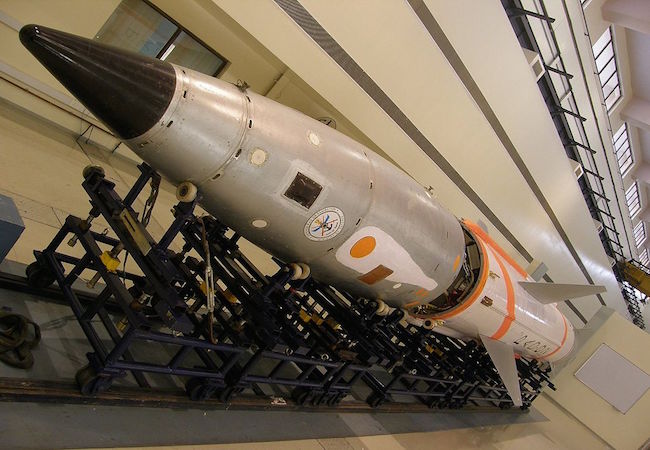Indian ballistic missile: Indicator of distress

By Beenish Altaf
The growing asymmetric relationship in nuclear South Asia is once again distressed by the recent launch of Indian nuclear capable ballistic missile. On February 15th 2016, India’s military had fired an indigenous Prithvi-II missile from a mobile launcher Hoist
Fundamentally just to remain in a state of conflict and tense environment India continues to exercise its proactive strategy of pre-emption in or the other way. The recent test although reported to be a failed one, was just an adding factor to it rather being a new modification in its ballistic missile factory. Assertively the missile was just a randomly chosen missile from the production stockpile of Indian missiles.
Paradoxically narrating, this is not the first test of the Prithvi-II missile that has a range of over 200 miles according to Economic Times and over 150 miles according to the Arms Control Association. Contrarily, the missile entered service in the Indian military in 2003 whose was first test-launched was in 1996. It has experienced test failures in the 2011 missile test-launch, while the missile used in this recent test also did not hit its intended target even though it reached its intended distance and altitude.
The fact the Indian military has had even mixed success in firing an apparently randomly selected Prithvi-II from a mobile launcher suggests that the country really has developed a semi-reliable nuclear delivery system that it can indigenously produce.
It is believed by the Indian lobby that Prithvi II has given India the ability to make its own mobile nuclear-capable ballistic missiles with a far-enough range to hit major city in Pakistan from inside Indian territory.
There is also an international distress and apprehensions over Indian development of Prithvi class of missiles. The US discouraged India reportedly, many times, against the mounting aspirations of Prithvi missile build up, throughout the 1990s. Washington is understandably nervous about the appearance of encouraging strategic weapons proliferation, and one of the rationales of the 2008 nuclear treaty was to give the US additional leverage over the development of India’s program.
The Prithvi II takes in the tensions of India’s nuclear weapons program. On the one hand, Delhi seeks to a position of global leadership that a markedly irresponsible nuclear weapons program would arguably undermine. At the same time, India needs to keep up its deterrent capability against its primary strategic opponents China and Pakistan, for which it remains in the state of enhancing and improving its nuclear capabilities all the time.
Since India is diplomatically less isolated owing to fact that India’s nuclear program has been semi-recognized through its landmark 2008 nuclear treaty with the United States and the fact that the country has developed nuclear weapons outside of the NPT makes it highly unlikely that an outside country would provide Delhi with a strategic delivery system nonetheless it got the capability of producing road-mobile missiles capable of hitting its neighboring adversaries.
In the recent NCA meeting it has been said the world’s focus has been on Pakistan’s reaction instead of Indian provocations. Actually, “the developments exacerbate Pakistan’s security dilemma, compelling it to make desirable improvements to achieve a balance and minimal developments in its conventional and strategic force posture.” The NCA reiterated its policy of maintaining Full Spectrum Deterrence for covering the entire spectrum of threat, including Cold Start Doctrine and land-based standoff capability in Andaman and Nicobar Isles.
Pakistani nuclear establishment proclaims that the developing regional dynamics inflict Pakistan to convert credible minimum deterrence into full spectrum credible minimum deterrence. While India is developing its short range ballistic missiles, inter-continental ballistic missiles and anti-missile program, Pakistan is focusing on its short-range and medium-range ballistic missiles with improved payloads, range, and reliability. The previous versions of Shaheen III could not reach India’s eastern front but latest launch test has ended this limitation and consequently, the launch of Shaheen III is of prominent significance because it consolidates Pakistan’s strategic deterrence in evolving regional scenario.
These Indian ballistic missile defense capabilities and its nuclear doctrinal transformations that are at its full pace of development, has indulged Pakistan in miniaturization of warheads. Lately the sea-based nuclear developments and evolving prospects of India building the top secret thermonuclear weapons, that could upgrade India as a nuclear power and unsettle Pakistan, will persuade Pakistan to maintain its full spectrum credible minimum deterrence capability to deter all forms of belligerence.




